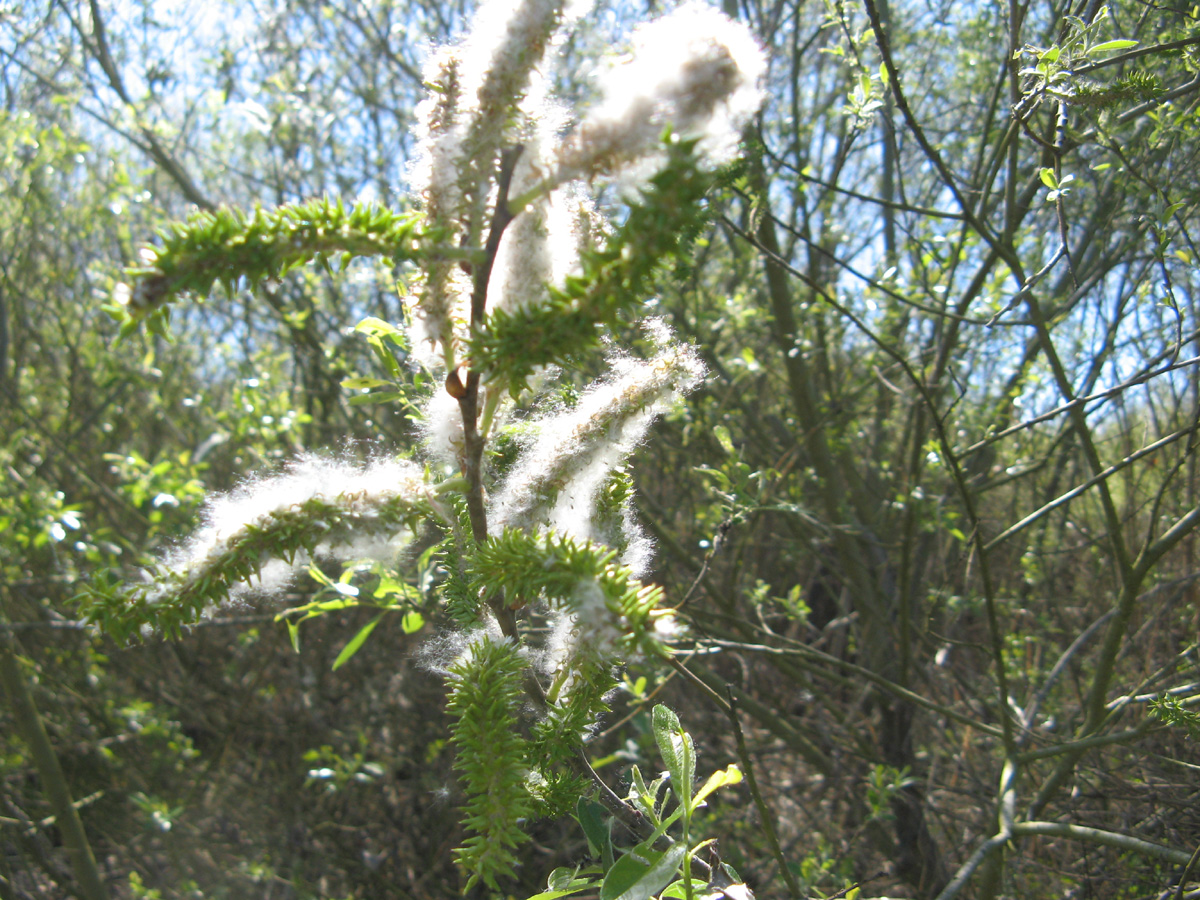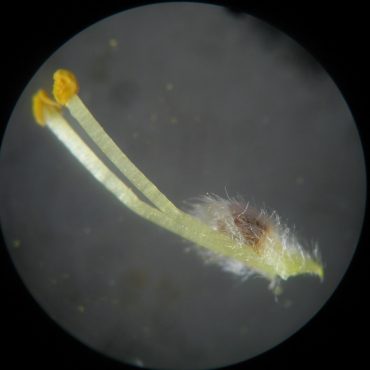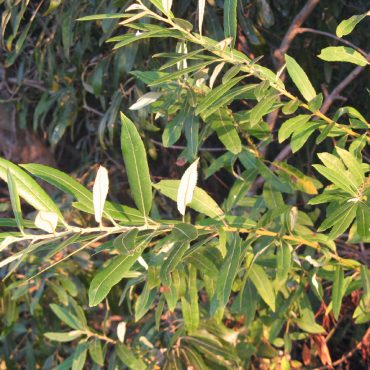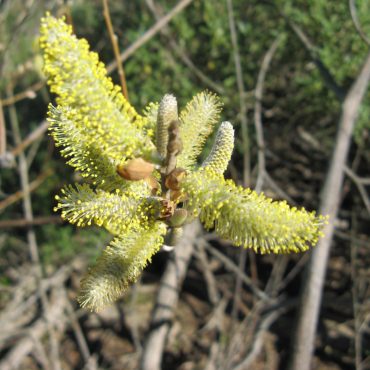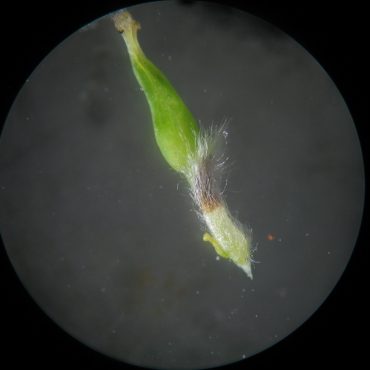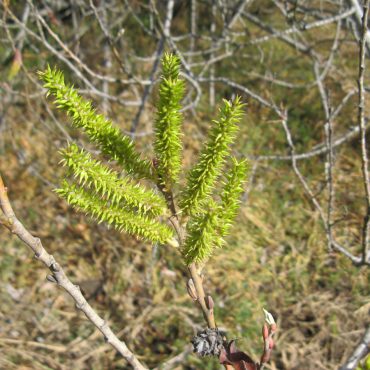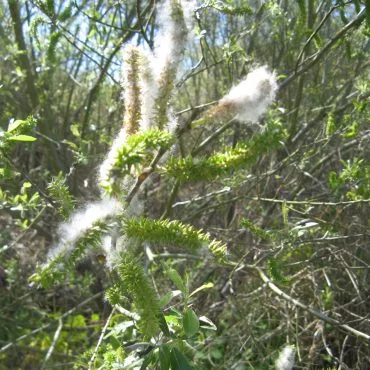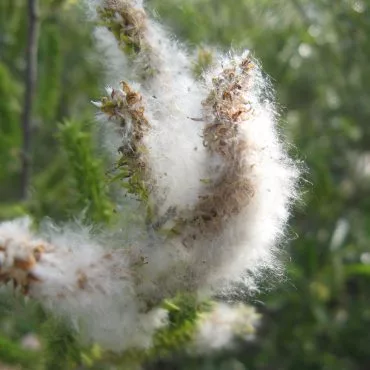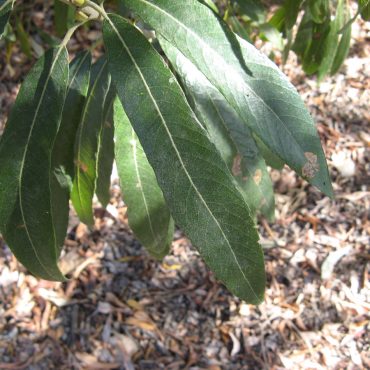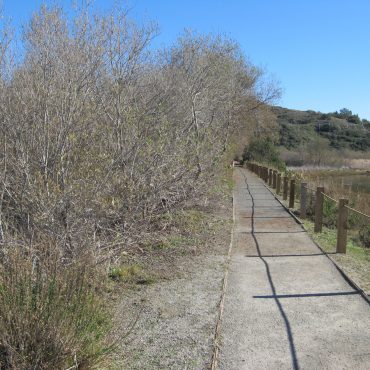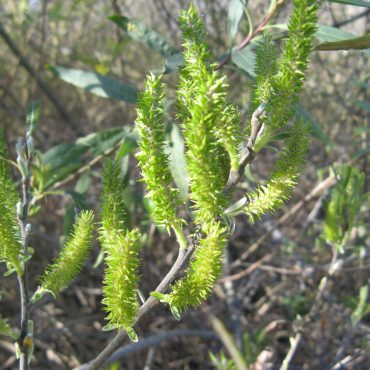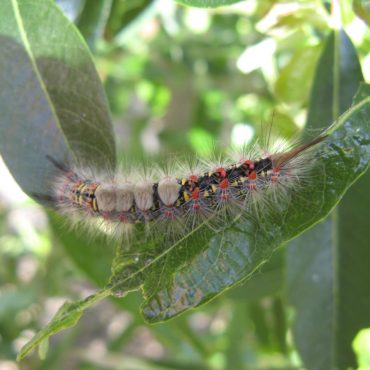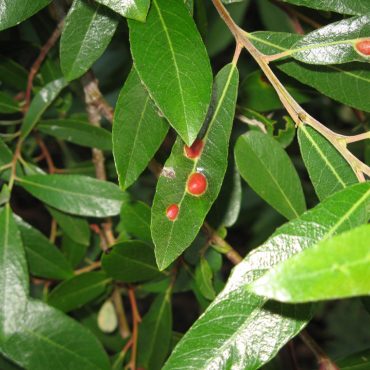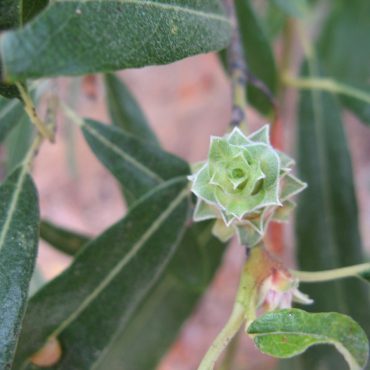Arroyo willows (Salix lasiolepis) grow in riparian areas (near permanent sources of fresh water). They lose their leaves in response, not to summer drought, but to the shorter days of winter. Willow catkins appear before the leaves with male and female flowers on different plants. The pollen-releasing male catkins are yellow (“yellow = fellow”), while the seed-producing catkins are green (“green = girl”). Unlike most catkin-bearing plants, willows are primarily insect pollinated.
Willows were extremely important to the Kumeyaay. A group of willows indicated a source of fresh water, and the branches, twigs, leaves and bark were used to make a number of items of daily life. Willow leaves and bark contain a compound (salicin) the active ingredient in aspirin; they were brewed into a tea to reduce pain and fever.

